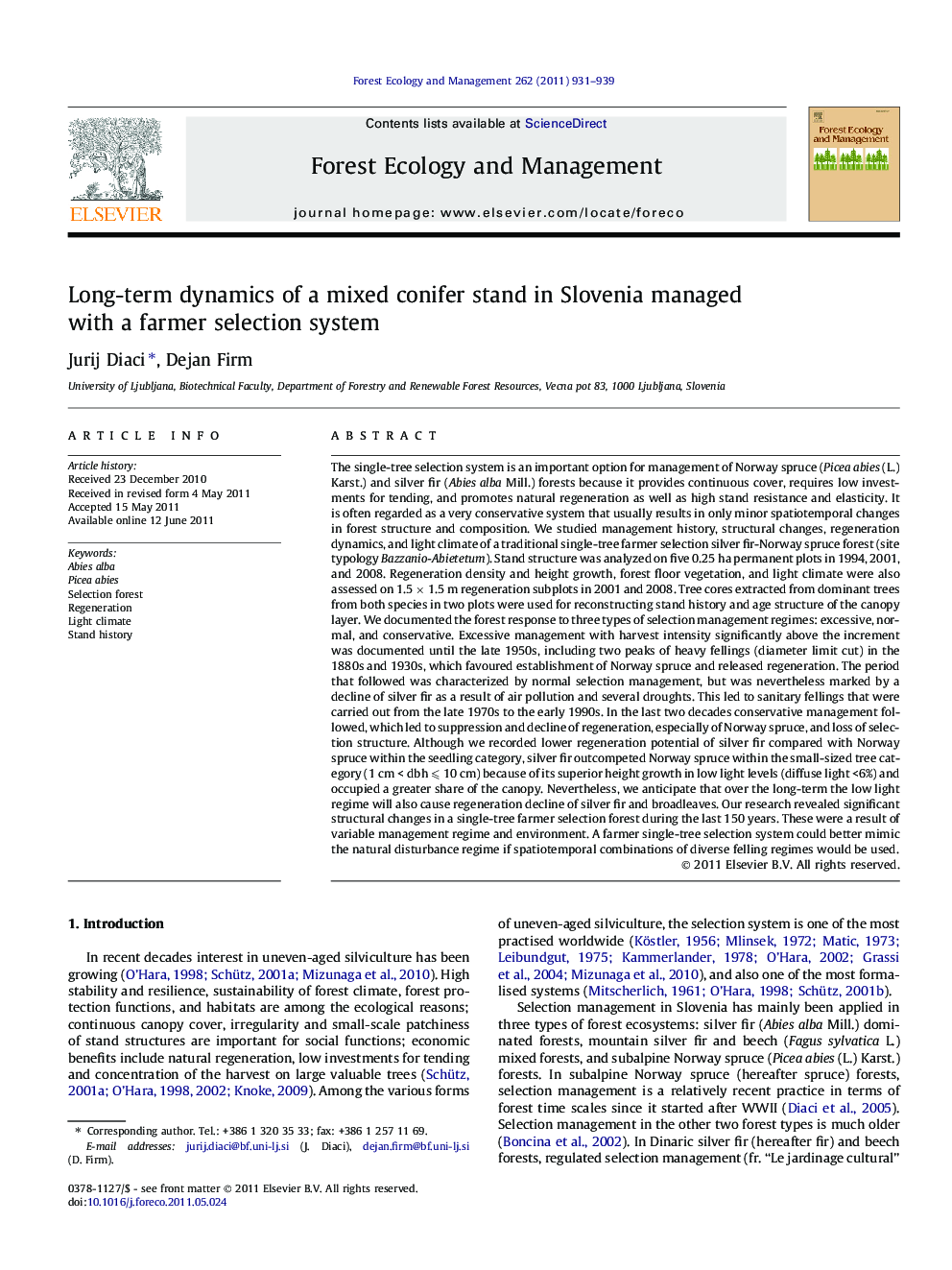| کد مقاله | کد نشریه | سال انتشار | مقاله انگلیسی | نسخه تمام متن |
|---|---|---|---|---|
| 87835 | 159269 | 2011 | 9 صفحه PDF | دانلود رایگان |

The single-tree selection system is an important option for management of Norway spruce (Picea abies (L.) Karst.) and silver fir (Abies alba Mill.) forests because it provides continuous cover, requires low investments for tending, and promotes natural regeneration as well as high stand resistance and elasticity. It is often regarded as a very conservative system that usually results in only minor spatiotemporal changes in forest structure and composition. We studied management history, structural changes, regeneration dynamics, and light climate of a traditional single-tree farmer selection silver fir-Norway spruce forest (site typology Bazzanio-Abietetum). Stand structure was analyzed on five 0.25 ha permanent plots in 1994, 2001, and 2008. Regeneration density and height growth, forest floor vegetation, and light climate were also assessed on 1.5 × 1.5 m regeneration subplots in 2001 and 2008. Tree cores extracted from dominant trees from both species in two plots were used for reconstructing stand history and age structure of the canopy layer. We documented the forest response to three types of selection management regimes: excessive, normal, and conservative. Excessive management with harvest intensity significantly above the increment was documented until the late 1950s, including two peaks of heavy fellings (diameter limit cut) in the 1880s and 1930s, which favoured establishment of Norway spruce and released regeneration. The period that followed was characterized by normal selection management, but was nevertheless marked by a decline of silver fir as a result of air pollution and several droughts. This led to sanitary fellings that were carried out from the late 1970s to the early 1990s. In the last two decades conservative management followed, which led to suppression and decline of regeneration, especially of Norway spruce, and loss of selection structure. Although we recorded lower regeneration potential of silver fir compared with Norway spruce within the seedling category, silver fir outcompeted Norway spruce within the small-sized tree category (1 cm < dbh ⩽ 10 cm) because of its superior height growth in low light levels (diffuse light <6%) and occupied a greater share of the canopy. Nevertheless, we anticipate that over the long-term the low light regime will also cause regeneration decline of silver fir and broadleaves. Our research revealed significant structural changes in a single-tree farmer selection forest during the last 150 years. These were a result of variable management regime and environment. A farmer single-tree selection system could better mimic the natural disturbance regime if spatiotemporal combinations of diverse felling regimes would be used.
► Long-term influence of single-tree selection system on forest structure was analysed.
► High variability of harvest intensity during last 130 years was recorded.
► Species mixture was regulated by canopy closure, silviculture and SO2 emissions.
► Improvement of the system is possible by spatiotemporal combination of diverse fellings.
Journal: Forest Ecology and Management - Volume 262, Issue 6, 15 September 2011, Pages 931–939